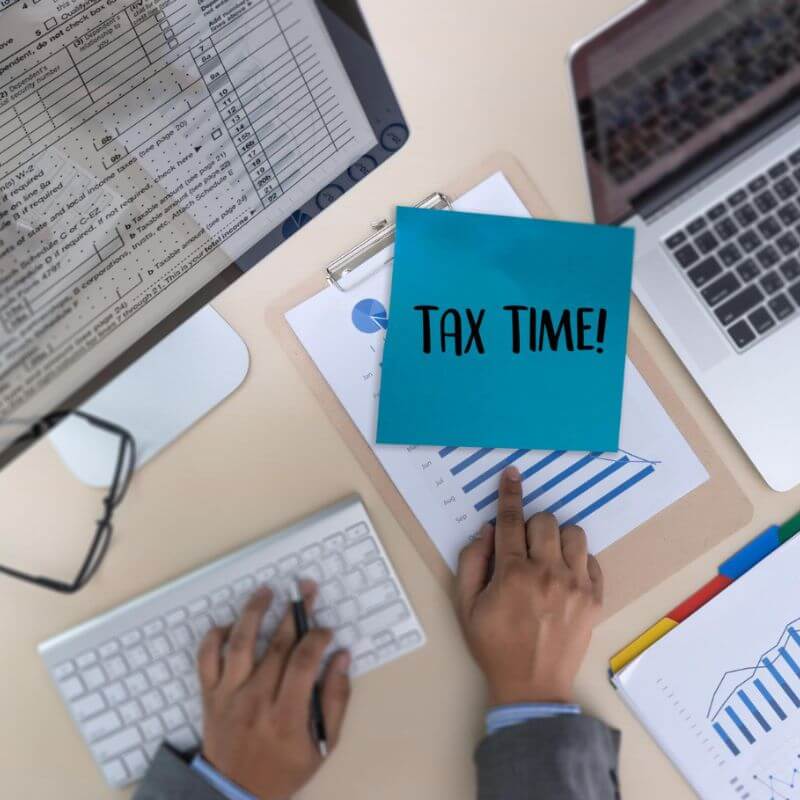Last Updated on July 16, 2025 by Amrita Das
Businesses worldwide have been heavily impacted by the COVID-19 pandemic, prompting the US government to introduce a range of relief measures. Among these measures is the Employee Retention Credit (ERC), a refundable tax credit that supports eligible employers who kept their employees during times of business disruption. As companies approach tax filing for 2020 and 2021, it is crucial to comprehend the correct method to report the ERC on Tax Return Form 1120S.

Read Also: Does Section 8 Look At Tax Returns? What You Need To Know
Employee Retention Credit (ERC) Concept
The Employee Retention Credit (ERC) is a valuable tax credit that provides financial relief to eligible businesses and tax-exempt organizations during challenging times.
This refundable credit is designed to help employers retain their employees by offsetting a portion of the wages paid to them.
The requirements for claiming this credit vary depending on the time period in which it is claimed, but overall, the ERC serves as a lifeline for businesses and organizations facing economic hardship.
By supporting employee retention, the ERC not only benefits employers but also helps to maintain a stable workforce and promote economic recovery.
What Is Form 1120-S?
Form 1120-S is an essential tax form for S corporations, which differ from traditional corporations in that their income and losses are passed through to shareholders for federal tax purposes.
This means that instead of the corporation paying taxes on its profits, individual shareholders report their portion of the corporation’s income and losses on their personal tax returns.
The filing of Form 1120-S is crucial as it declares the corporation’s income, deductions, and credits for the year, allowing for the calculation of taxable income and potential tax liability. This form also serves as a record of any estimated tax payments made by the corporation throughout the year.
To be required to file Form 1120-S, a business must have previously elected to be an S corporation by submitting Form 2553 and had the election accepted and still in effect.
The form itself requires detailed information about the corporation’s gross income, deductions and credits claimed, shareholder details, taxable income calculation, and potential tax liability.
While S corporations are generally exempt from corporate-level income tax, they must still pay other taxes such as payroll and sales taxes and make estimated tax payments if their expected tax bill for the year exceeds $500.
Understanding Form 1120-S is crucial for S corporations to accurately report their financial information and fulfill their tax obligations.
Who Is Eligible To Claim The ERC?
Who Qualifies as an Eligible Employer?
To be eligible for the Employee Retention Credit, an employer must fall into one of the following categories:
- For-profit entity
- Tax-exempt organization (under section 501(c) of the Internal Revenue Code)
- Public colleges and hospitals
- Tribal government or entity
It’s important to note that household employers are not eligible for this credit. However, self-employed individuals may be able to claim the ERC for wages paid to their employees, but not for their own compensation.
Meeting The Requirements: Significant Decline In Gross Receipts
In order for an employer to be eligible for the Employee Retention Credit (ERC) in 2020, they must have experienced a substantial decrease in their gross receipts during a specific calendar quarter. This is defined as a decrease of at least 50% in gross receipts compared to the same quarter in 2019.
The effective date for this test is the first day of the qualifying quarter, and eligibility ends on the day following any quarter where there was no longer a significant decline.
For 2021, an employer must have experienced a decrease of at least 20% in gross receipts compared to the same quarter in 2019 or to the previous quarter if they were not in business during 2019.
It’s important to note that businesses related to each other may be considered one entity when determining if there was a significant decline.
Meeting The Requirements: Partial Or Full Suspension Of Operations
An employer can also be eligible for the ERC if its operations were partially or fully suspended due to a government order related to COVID-19.
This includes orders from any level of government that limit commerce, travel, or group meetings. However, recommendations and best practices do not qualify.
To meet the requirements for this category, the governmental order must have caused the employer to either fully or partially suspend its operations.
It must also affect an activity that made up at least 10% of the employer’s gross receipts in 2019 or 10% of the working hours performed by their employees in 2019.
For example, a reduction in maximum occupancy may qualify, while a mask mandate likely would not. If an employer is able to conduct business remotely due to a government order, they may not be eligible for this category.
Understanding Eligibility: Government Orders And Requirements
It’s important to note that only governmental orders and mandatory requirements qualify for the ERC. This means that any official rule from a federal, state, or local government with jurisdiction over the employer may count towards eligibility.
However, if an order is issued by a non-governmental entity or organization, it likely will not qualify.
Overall, determining eligibility for the Employee Retention Credit can be complex and may involve various factors such as gross receipts and government orders.
Employers should consult with their tax advisor or legal counsel to ensure they meet all necessary requirements before claiming the credit on their taxes.
Additional Reading: Do Churches Pay Property Tax? Discover Everything
Who Is Not Eligible To Claim The ERC?
There are several categories of taxpayers who are not eligible to claim the Employee Retention Credit (ERC). These include individual taxpayers who do not operate a business or tax-exempt organization with employees, as well as employees, retirees, and self-employed individuals without employees.
Household employers and government agencies are also ineligible for the ERC.
Additionally, employers who did not pay wages to employees during the qualifying time periods or those who experienced supply chain disruptions but did not have a full or partial suspension of operations by a qualifying order are also not eligible.
It is important to note that there may be other limitations or exceptions that apply in certain circumstances for specific types of employers. As such, it is crucial to thoroughly understand the eligibility criteria before attempting to claim the ERC.
So, taxpayers who fall under these categories should be cautious of any ERC scam promoters targeting them and ensure they meet all eligibility requirements before attempting to claim the credit.
How To Calculate Your Credit For The ERC?
To calculate your credit for the Employee Retention Credit (ERC), you first need to determine if you are eligible. This can be done by comparing your revenue during a specific covered period to the same period in the prior year.
If there is at least a 20% decline, then you may qualify for the credit. Once eligibility is established, calculating the amount of credit is relatively straightforward.
To support businesses during the pandemic, a tax credit of up to 70% can be claimed on qualified wages paid to employees during the covered period. This translates to a maximum credit of $7,000 per employee per quarter for 2021 and $5,000 for 2020.
The definition of qualified wages includes payments made to both full-time and part-time employees, as well as any wages that were not affected by the salary reduction mandated by the CARES Act.
By understanding these calculations, you can determine how much of a credit your business may be eligible for and plan accordingly.
How To Report ERC On Tax Return 1120s? Explore Step By Step

Now that we understand the basics of the ERC, Form 1120-S, eligibility requirements, and calculation of your credit for the ERC, let’s take a closer look at how to report this ERC on your tax return 1120s properly.
Step 1: Complete Form 941
Before you can report ERC on Form 1120S, you must first document it on Form 941, the Employer’s Quarterly Federal Tax Return. Carefully calculate your ERC for each quarter, and make sure to enter it on Line 11c of Form 941.
Step 2: Include it on Schedule K-1
After you have reported the Employee Retention Credit on Form 941, the next step is to incorporate it into Schedule K-1 (Form 1120S), which details the Shareholder’s Share of Income, Deductions, Credits, etc.
This step is crucial in ensuring that the credit is properly allocated to the S corporation’s shareholders.
Step 3: Report it on Form 1120S
Finally, when you file your Form 1120S, include the total ERC claimed for the year on the specified line. Doing so will ensure the credit is accurately accounted for in your annual tax liability.
Avoiding Common Errors To Report ERC On Form 1120s
Whether it seems straightforward or complicated when reporting ERCs on Form 1120-S, there are some common mistakes that businesses should be aware of and try to avoid. These include:
- Failing to include all qualified wages in the credit calculation
- Miscalculating the ERC amount
To ensure accuracy and avoid potential penalties, it is recommended to seek the assistance of a tax professional when reporting the ERC on your tax return.
Is ERC Considered A Taxable Income?
The question of whether the Employee Retention Credit (ERC) is considered taxable income is a common one for employers and businesses who are eligible to claim this credit.
While the ERC itself may not be subject to taxation, it does have an impact on your overall tax return. This is because claiming the ERC means reducing your payroll expense deductions by the amount of the credit claimed.
This is similar to the rule for Research and Development (R&D) tax credits, where taxpayers are required to reduce their deductible expenses by the amount of the R&D credit claimed. It’s important to note that these two types of credits cannot be claimed simultaneously to prevent businesses from double-dipping.
To optimize your cash flow, it’s essential to carefully consider the impact of claiming both federal tax credits and take necessary steps to ensure that you can still receive the maximum benefit from each credit.
Ultimately, while the ERC may not be directly taxable income, it can still affect your overall tax return by increasing your taxable income and therefore, potentially increasing the amount of taxes owed.
Additional Reading: Short Term Rental Tax Loophole: Maximize Your Tax Savings
How Does the Employee Retention Credit Impact Tax Returns?
The Employee Retention Credit has significant implications for a business’s tax return, and understanding these effects is crucial for maximizing its benefits.
This section will discuss in more detail the various ways the ERC affects a business’s tax situation, including reduction in deductible payroll expenses, interactions with other credits and relief measures, reporting requirements, and impact on quarterly estimates.
Reduction In Deductible Payroll Expenses
When a business claims the ERC, the amount of credit received is deducted from its total payroll costs that can be used to lower taxable income. This means that if a business receives $100,000 in ERC, its deductible payroll expenses will decrease by the same amount, potentially increasing its taxable income and tax liability.
Therefore, businesses need to carefully consider how much of the credit to claim to balance their tax deductions and credits effectively.
Interaction With Other Credits And Relief Measures
In addition to the Employee Retention Credit (ERC), there are other tax credits and relief measures that businesses may qualify for. It’s important to note that wages used for calculating the ERC cannot be used for other credits such as the credit for paid sick and family leave or the Work Opportunity Tax Credit.
This means that businesses must carefully plan how they allocate their payroll costs in order to maximize their overall tax benefits. It’s crucial to have a strategic approach when it comes to utilizing these different credits and relief measures together.
Reporting Requirements
As part of their tax obligations, businesses are required to report the total amount of qualified wages and related health insurance costs on their federal employment tax returns. This is usually done through Form 941, also known as the Employer’s Quarterly Federal Tax Return.
The credit received from the ERC will then be reconciled on the business’s annual tax return, which can significantly impact its overall tax liability.
It is crucial for businesses to maintain proper documentation and accurately report these figures in order to comply with regulations and fully utilize the benefits of the ERC.
Impact On Quarterly Estimates
The ERC can also have an impact on a business’s quarterly estimated tax payments. By reducing the deductible for total payroll expenses, the credit may result in an increase in the business’s estimated taxable income.
This could potentially require adjustments to be made to estimated tax payments in order to avoid any underpayment penalties. So, it is important for businesses to carefully consider and plan for the potential impact of claiming the ERC on their quarterly estimates.
Best Practices For Businesses
To effectively navigate the complexities of the ERC and maximize its benefits, businesses should follow best practices such as maintaining thorough documentation, strategic tax planning, ensuring compliance with reporting requirements, and regularly reassessing quarterly estimates.
By following these practices, businesses can make the most of the ERC while staying in compliance with tax regulations.
Additional Reading: Do You Have to Pay Taxes on Insurance Settlements?
Is It Possible To Reduce Payroll Tax Expenses With The Employee Retention Credit?
The Employee Retention Credit (ERC) has proven to be a valuable tool for businesses looking to reduce their payroll tax expenses. Not only does it allow employers to offset federal employment taxes, but any excess credit can also be refunded.
This is especially beneficial in the current post-pandemic landscape where businesses are striving to recover and rebuild.
By claiming the ERC, businesses can not only improve their financial health, but also contribute to sustainability and stability in their workforce. This can ultimately lead to long-term benefits for businesses and their employees alike.
The ERC serves as a valuable incentive for employers to retain and invest in their employees, which is crucial for economic recovery and growth moving forward. With the potential to significantly reduce payroll tax expenses, the ERC is undoubtedly a valuable and beneficial option for businesses to consider.
Can I Request An ERC Claim Withdrawal?

Yes, you can. If you find yourself in a situation where you need to withdraw your Employee Retention Credit (ERC) claim, there are specific steps you will need to follow depending on your circumstances.
Some common scenarios where you may encounter issues with your tax refund include not receiving a refund, being notified of an audit, or receiving a refund check but not cashing or depositing it yet.
Let’s take a closer look at the steps involved in each scenario.
Haven’t Received A Refund And Haven’t Been Notified Of An Audit:
If you filed an adjusted return (Form 941-X, 943-X, 944-X, CT-1X) to claim the ERC and would like to withdraw your entire claim, there are certain steps you must follow.
These include making a copy of the adjusted return with the claim you wish to withdraw and writing “Withdrawn” in the left margin of the first page.
You will also need to have an authorized person sign and date the document and provide their name and title next to their signature. Once completed, you can fax or mail your withdrawal request to the IRS.
Haven’t Received A Refund But Have Been Notified Of An Audit:
If you have been notified that the IRS is auditing your adjusted return containing your ERC claim, you will still need to follow similar steps as mentioned above.
However, instead of submitting your request through the designated fax line or mailing address, it is important to communicate directly with your assigned examiner or respond to the audit notice with your withdrawal request.
Received A Refund Check But Haven’t Cashed Or Deposited It:
In the scenario where you have received a refund check for your ERC claim but have not yet cashed or deposited it, there are additional steps you must take.
This includes writing “Void” on the back of the refund check and including a note stating “ERC Withdrawal” along with an explanation for returning the check. You will also need to make copies of all relevant documents and mail them to the designated IRS address.
Once your withdrawal request has been submitted, you can track its delivery and wait for confirmation from the IRS. It is important to note that your approved request will not be effective until you receive an acceptance letter from the IRS.
Additionally, if your withdrawal is accepted, you may need to amend your income tax return accordingly. In this case, it is recommended to seek out guidance from a trusted tax professional for assistance with the process.
Read More: Do Amish People Pay Taxes? Explore Step By Step
How To Report ERC On Tax Return 1120s? Conclusion
The Employee Retention Credit is a valuable relief measure for eligible employers who have been impacted by the COVID-19 pandemic. Properly reporting this credit on Form 1120-S is crucial for businesses to receive the full benefits it offers.
By following the IRS instructions and seeking professional assistance if needed, businesses can ensure accuracy and avoid potential errors when claiming the ERC on their tax return.
This credit not only provides immediate financial relief but also contributes to long-term business sustainability and stability. So, make sure to take advantage of this credit and report it correctly on your Form 1120-S.
